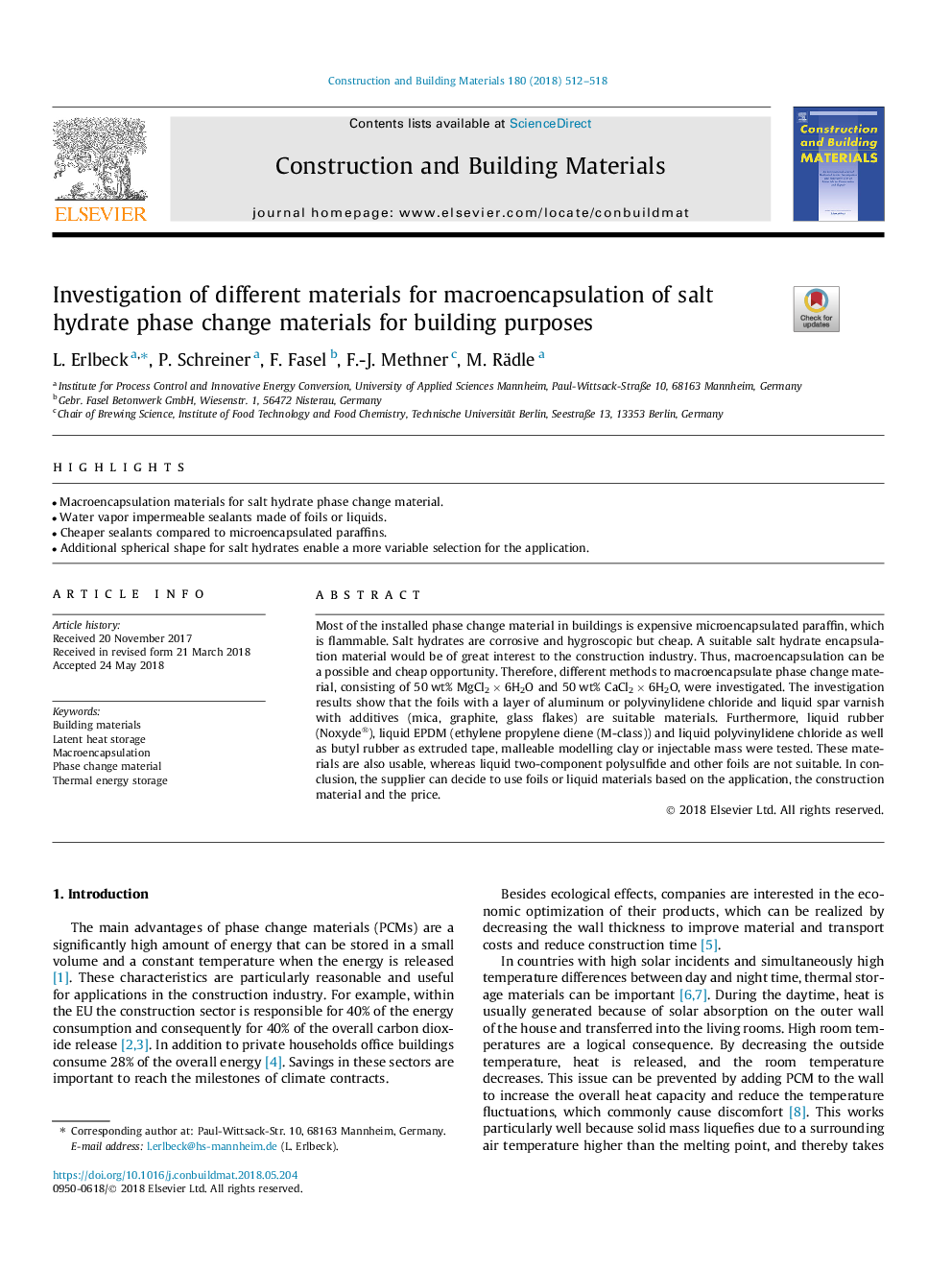| Article ID | Journal | Published Year | Pages | File Type |
|---|---|---|---|---|
| 6712651 | Construction and Building Materials | 2018 | 7 Pages |
Abstract
Most of the installed phase change material in buildings is expensive microencapsulated paraffin, which is flammable. Salt hydrates are corrosive and hygroscopic but cheap. A suitable salt hydrate encapsulation material would be of great interest to the construction industry. Thus, macroencapsulation can be a possible and cheap opportunity. Therefore, different methods to macroencapsulate phase change material, consisting of 50â¯wt% MgCl2â¯Ãâ¯6H2O and 50â¯wt% CaCl2â¯Ãâ¯6H2O, were investigated. The investigation results show that the foils with a layer of aluminum or polyvinylidene chloride and liquid spar varnish with additives (mica, graphite, glass flakes) are suitable materials. Furthermore, liquid rubber (Noxyde®), liquid EPDM (ethylene propylene diene (M-class)) and liquid polyvinylidene chloride as well as butyl rubber as extruded tape, malleable modelling clay or injectable mass were tested. These materials are also usable, whereas liquid two-component polysulfide and other foils are not suitable. In conclusion, the supplier can decide to use foils or liquid materials based on the application, the construction material and the price.
Keywords
Related Topics
Physical Sciences and Engineering
Engineering
Civil and Structural Engineering
Authors
L. Erlbeck, P. Schreiner, F. Fasel, F.-J. Methner, M. Rädle,
